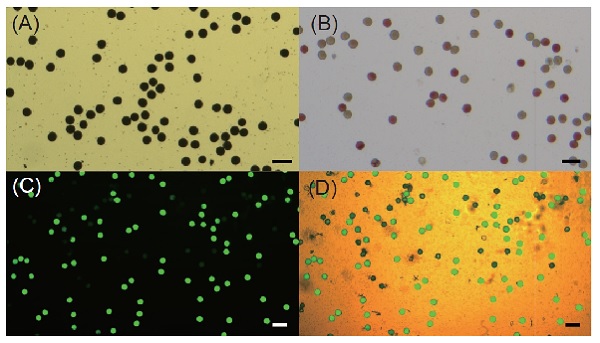All issues

Author:Chi-Ni Hsia, Shuen-Chi You, Chin-Yi Tsao, Yong-Jie Su, Charng-Pei Li*
Abstract:
Rice is the major staple food in Taiwan, however, detrimental effects on rice grain yield and quality by the heat stress have been observed. Since anthesis is the most sensitive stage to high temperature in the rice life cycle, the viability of pollens under the heat stress will be an appropriate index for thermo-tolerance of the variety. In addition to establishing an in vitro pollen culture medium, a number of pollen staining methods as well as using an impedance flow cytometry (IFC) for pollen viability analysis were conducted in this study. Fresh pollens of a japonica rice cultivar ‘Tainan 11’ (‘TN11’) and a heat-tolerant aus type rice cultivar ‘Nagina 22’ (‘N22’) were used in all experiments. In order to establish a proper medium for pollen tube germination, the ultimate concentration of various important components including sucrose, boric acid and calcium nitrate was investigated in successive terms. The results showed that a medium containing 22.5% sucrose, 60 mg L-1 boric acid, and 200 mg L-1 calcium nitrate had the highest pollen tube germination rate of 76.0% in ‘N22’ and 78.7% in ‘TN11’. Three pollen staining methods including I2/KI, fluorescein diacetate (FDA), and 2,3,5-triphenyltetrazolium chloride (TTC) were compared in this study. The highest staining rate was obtained from I2/KI followed by FDA and the lowest rate was found from TTC. Three methods of in vitro pollen culture, FDA staining, and IFC analysis were investigated for pollen viability. Although no difference was found among these three methods on pollen viability in ‘TN11’, FDA resulted in a higher staining rate than the in vitro pollen culture in ‘N22’. However, there was no difference found on IFC with the other two methods in ‘N22’. It is concluded that IFC was not different from pollen staining or in vitro pollen culture in detecting pollen viability. Fresh pollens of the two rice cultivars were subjected to temperature from 25℃ to 45℃ for 15 min before analyzing by IFC. The results showed that pollen viability was significantly decreasing along with raising the temperature in ‘TN11’; however, no significant decrease was found until 35℃, and no significant changes in pollen viability between 35℃ to 40℃ were found in ‘N22’. The results indicated that pollens of ‘N22’ had higher thermo-tolerance than that of ‘TN11’.
Key words:Oriza sativa L., In vitro pollen germination medium, Pollen viability, Impedance flow cytometry
Download:![]() PDF Links
PDF Links
- 1. Development of Tractor-Mounted Seedling Transplanter for Sweet Potato
- 2. Synergistic Effect of Additional Gas on the Toxicity of Phosphine to Sitophilus oryzae and Sitophilus zeamais (Coleoptera: Dryophthoridae)
- 3. Effects of Temperature and Solar Radiation on Growth Traits and Plant Elements in Purple Leafy Sweet Potato
 Submit your manuscript
Submit your manuscript
 Guide for authors
Guide for authors